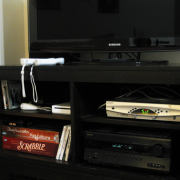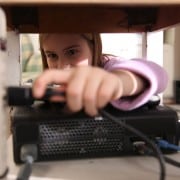Saving energy in the kitchen
The holidays are upon us, which means most of us will be spending a lot of time in the kitchen. Whether you are considering replacing an appliance or simply looking for small ways to be more efficient, here are some tips to help you save energy – and money!
It sits in the kitchen, quietly humming away to keep your food cold. Most people don’t think about their refrigerator that often – as long as it’s working. A refrigerator typically runs for several years without any problems – but that doesn’t mean it’s performing to its optimal capacity. Older refrigerators use more energy. Upgrading this appliance can bring a major return on your investment.
According to Energy Star, if your refrigerator is from the 1980s, replacing it with a new model could cut your electric bill by $100 a year. If you bought your refrigerator in the 1970s, the savings could be as much as $200 a year.
Cooking can also be a big energy expender – in more ways than one! But there are a few ways to save energy while cooking. Placing the lid on a pot of boiling water will trap heat and cause the water to come to a boil faster. And there is no need to preheat the oven when cooking a large piece of meat, like a turkey or ham (you do need to preheat when baking or cooking smaller dishes). And, if you are planning on using the oven for a long period of time – for instance, when you are cooking one of those large pieces of meat – you might be able to turn down your home’s thermostat. The simple act of cooking will add warmth to the home because the heat from the oven can raise the temperature in the kitchen and surrounding rooms. This is especially true if you are hosting a party. Once your home begins to fill with people, the temperature will quickly begin to rise.
Even after the meal is over, there are still ways for you to save energy. The first is to make sure that your dishwasher is full before it’s started. Next, make sure you are using the right setting on your dishwasher. Many newer dishwashers have sensors that detect how clean your dishes are. When these auto cycles are used, they will get dishes clean without wasting energy or water. The sanitize setting should rarely be used since it is energy intensive. It is also a good idea to make sure the filter at the bottom of the wash-tub is cleaned. This will help the washer work at its optimal level.
One of the cheapest and easiest ways to save energy in the kitchen is to replace existing lights with LEDs. Not only do they use less energy – you don’t have to replace them nearly as often. Plus, their costs have come down in recent years, making them far more affordable to install. (Note: if you currently have linear fluorescent lamps, converting to LEDs may be too expensive to justify).
As you can see, there are many different ways to practice efficiency in the kitchen, and who knows – you could even save enough money to treat the family to dinner out a couple of times a year.
Brian Sloboda is a senior program manager specializing in energy efficiency for the Cooperative Research Network, a service of the Arlington, Va.-based National Rural Electric Cooperative Association. The Cooperative Research Network monitors, evaluates, and applies technologies that help electric cooperatives control costs, increase productivity, and enhance service to their consumers. Additional content provided by ESource.










